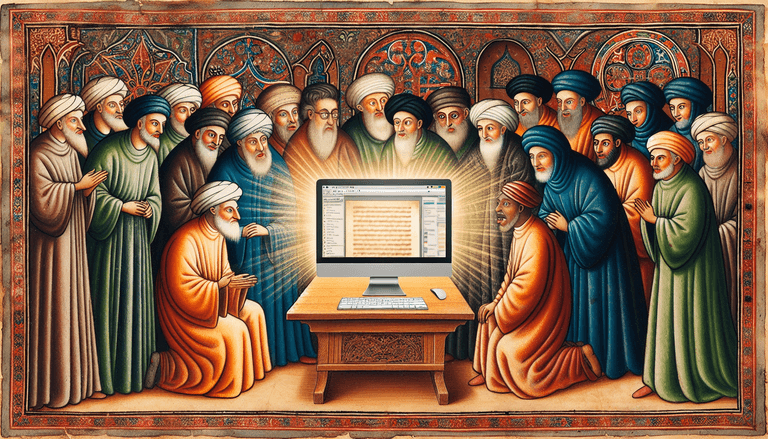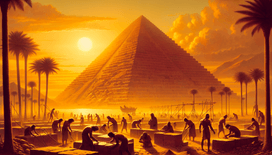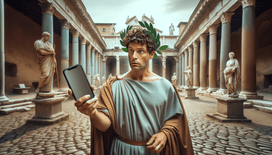Ah, the Magna Carta, a beacon of liberty, a triumph of diplomacy, and let’s be honest, an epic exercise in medieval paperwork. Imagine, if you will, what would have happened if the year 1215 had a technological twist, and the barons had access to the miraculous convenience of a downloadable PDF. Buckle up, dear reader, as we explore this parchment tale with a pixel-perfect flair.
Historical Flashback: The Medieval Timeshare Presentation
In our original timeline, King John of England found himself in rather hot water. His barons were upset over feudal rights and taxes, so much so that they collectively thought, "Let's draft a manifesto of grievances and hand-deliver it to our overlord. What could possibly go wrong?"
King John was then essentially brought to a historical timeshare presentation at Runnymede, where instead of a free buffet, he was presented with a 63-clause document that would become the Magna Carta. Spoiler alert: things didn't go exactly as planned, but let's save that for another time.
The PDF Revolution: A New Era of Peasant-Friendly Protocols
But hold your horses, or, given the context, your quarrelsome barons, what if instead of scribes frantically scribbling on parchment, a digital angel from the future beamed down the concept of a PDF? No more goose quills and ink blots; our revolutionary barons could now draft their seminal charter in the comfort of their own motte-and-bailey castles.
This would mean instant distribution, as their legally binding demands could zoom off on the medieval Ethernet, all the way from the forests of Sherwood to the stone-cold floors of Winchester Castle. Imagine the King John in front of a pixelated quagmire, mumbling, "Amendment? Should we append it? Or send it as is?"
The Barons’ Tech Tactics
First up, imagine Lord Fitzwalter with an eye for design utilising modern desktop publishing skills. PDFs are, after all, a visual representation of agreements and need a certain panache. Perhaps a watermark of a dragon, some holographic text, or a coat of arms would entice King John to sign with gusto.
Next, picture the barons themselves. Rather than trudging through London’s notoriously muddy thoroughfares, they could opt for Zoom calls with the King, blessing medieval England with the newly minted slogan: “Can we Magna Carta now?”
Signees of the Digital Age
Of course, we can’t forget the signatures. Fun fact: the ancient practice of sealing documents with wax and regal stamps might have evolved into everyone reaching for a stylus pen to sign their tablets, linking not only with Wi-Fi but also with medieval chivalry.
And let's not overlook the barons' strategy meetings held in virtual breakout rooms. They’d plan their next steps with less paranoia, knowing their classified charter wasn’t half-inchable by peasant hackers with a quill and a dream.
A Charter for Change
Imagine the Magna Carta going viral! Screens ablaze with revolutionary fervour, peasants could Snapchat provisions to one another and even create TikToks explaining how feudal justice worked or didn’t work, as the case may be... We might even see a hashtag trend: #CartaCraze. "Check out Earl Simon as he lays down his top five Magna Carta clauses that protect ye from yonder taxmen!"
Maybe the barons would even crowdsource some of their demands, harnessing the power of a medieval Kickstarter to fund their initiative, proving once again that fiscal negotiation is timeless.
Postscript of a PDF
Fast forward to today: would King John’s reign have collapsed like a game of Jenga played over an unstable Wi-Fi signal? Or would this digital epiphany lead to an entirely new era of faster, paperless feudal disputes?
Ultimately, the Magna Carta would remain a watershed document with or without a PDF makeover, ushering in a constitutional framework that championed the rights of individuals. Yet, with a few bytes here, a JPEG there, history might have become a touch more, shall we say, clickable?
So as you print, scan, or save documents to your cloud storage today, spare a thought for those poor barons of Runnymede, hunched over their desktops, hitched up in medieval robes, pondering page margins in Times New Roman.
And who knows, perhaps the next chapter of human right’s activists will find inspiration from a digital relic, an old PDF hidden in the recesses of a knight's Dropbox. One can only dream, or in our case, download.







